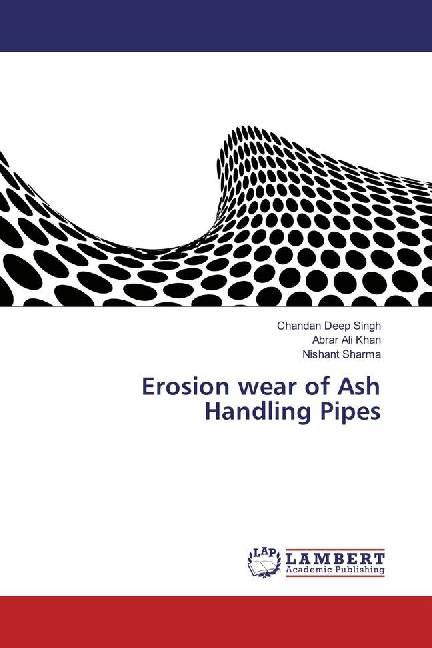
- Afhalen na 1 uur in een winkel met voorraad
- Gratis thuislevering in België vanaf € 30
- Ruim aanbod met 7 miljoen producten
- Afhalen na 1 uur in een winkel met voorraad
- Gratis thuislevering in België vanaf € 30
- Ruim aanbod met 7 miljoen producten
Zoeken
Erosion wear of Ash Handling Pipes
Chandan Deep Singh, Abrar Ali Khan, Nishant Sharma
Paperback | Engels
€ 35,45
+ 70 punten
Omschrijving
Erosion wear is most common problem encountered in industries like thermal power plants. More than 60% of India energy can meet through large coal mines. Coal combustion in thermal power plant generates 25-30% of fly ash. This ash is generally transported to ash ponds with the help of ash handling pipes. Mild steel is commonly used material in fly ash handling pipes in transporting slurries. The present work deals with the alternative material instead of mild steel. Stainless steel 303 is used as alternative. In this we erode both the materials at different parameters. The erodent used is fly ash slurry. The parameters used are particle size, impact angle, time at constant concentration. Material removal rate is measured with measuring specific mass loss of the specimen before erosion and after erosion. The analysis of the erodent material was done using SEM. signatures of ploughing, formation of crater, pores were observed on the eroded surface of mild steel and stainless steel 303.Erosion wear of SS 303 came out to be less than that of mild steel
Specificaties
Betrokkenen
- Auteur(s):
- Uitgeverij:
Inhoud
- Aantal bladzijden:
- 56
- Taal:
- Engels
Eigenschappen
- Productcode (EAN):
- 9783330049345
- Uitvoering:
- Paperback
- Afmetingen:
- 150 mm x 220 mm

Alleen bij Standaard Boekhandel
+ 70 punten op je klantenkaart van Standaard Boekhandel
Beoordelingen
We publiceren alleen reviews die voldoen aan de voorwaarden voor reviews. Bekijk onze voorwaarden voor reviews.











